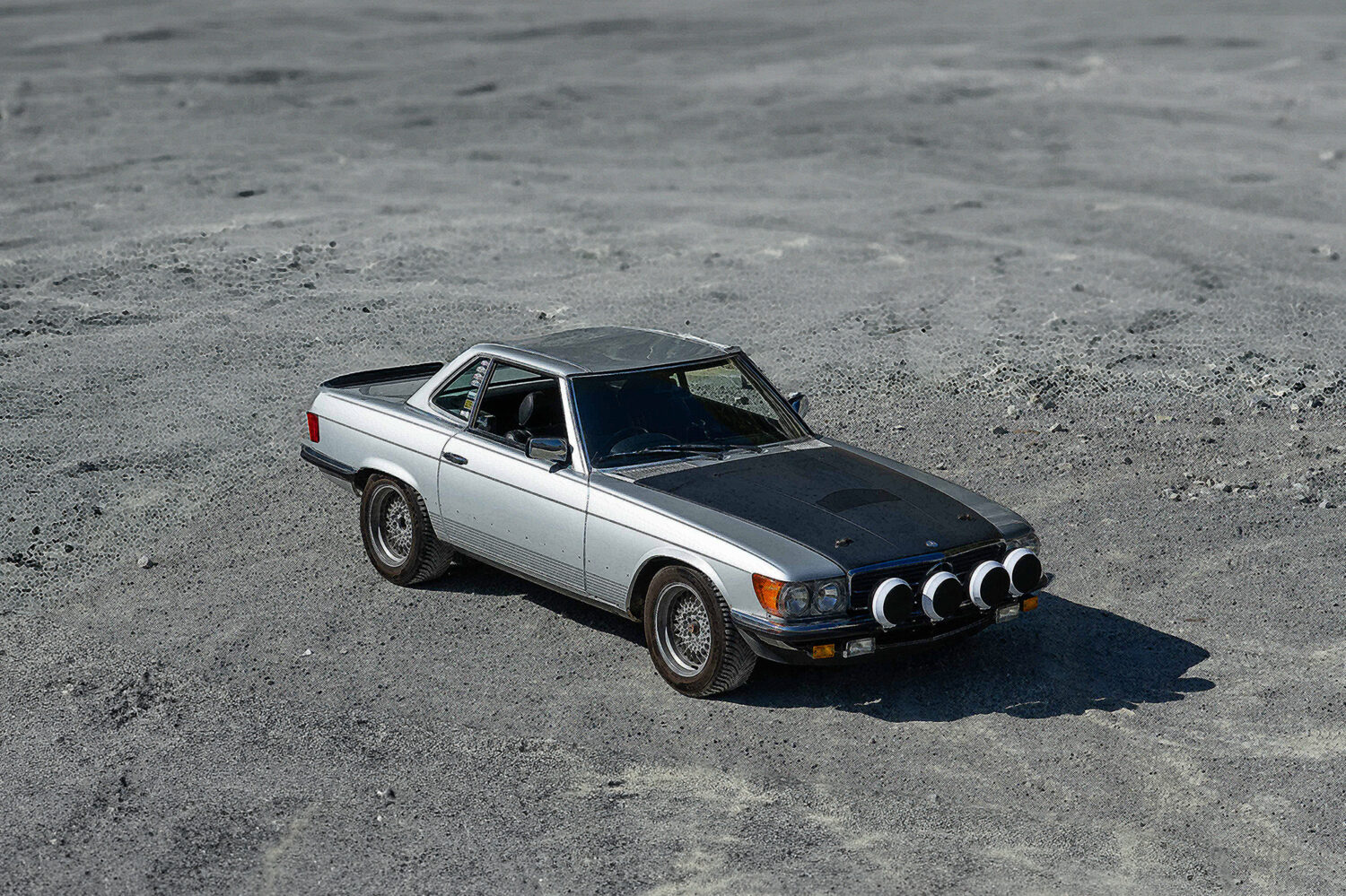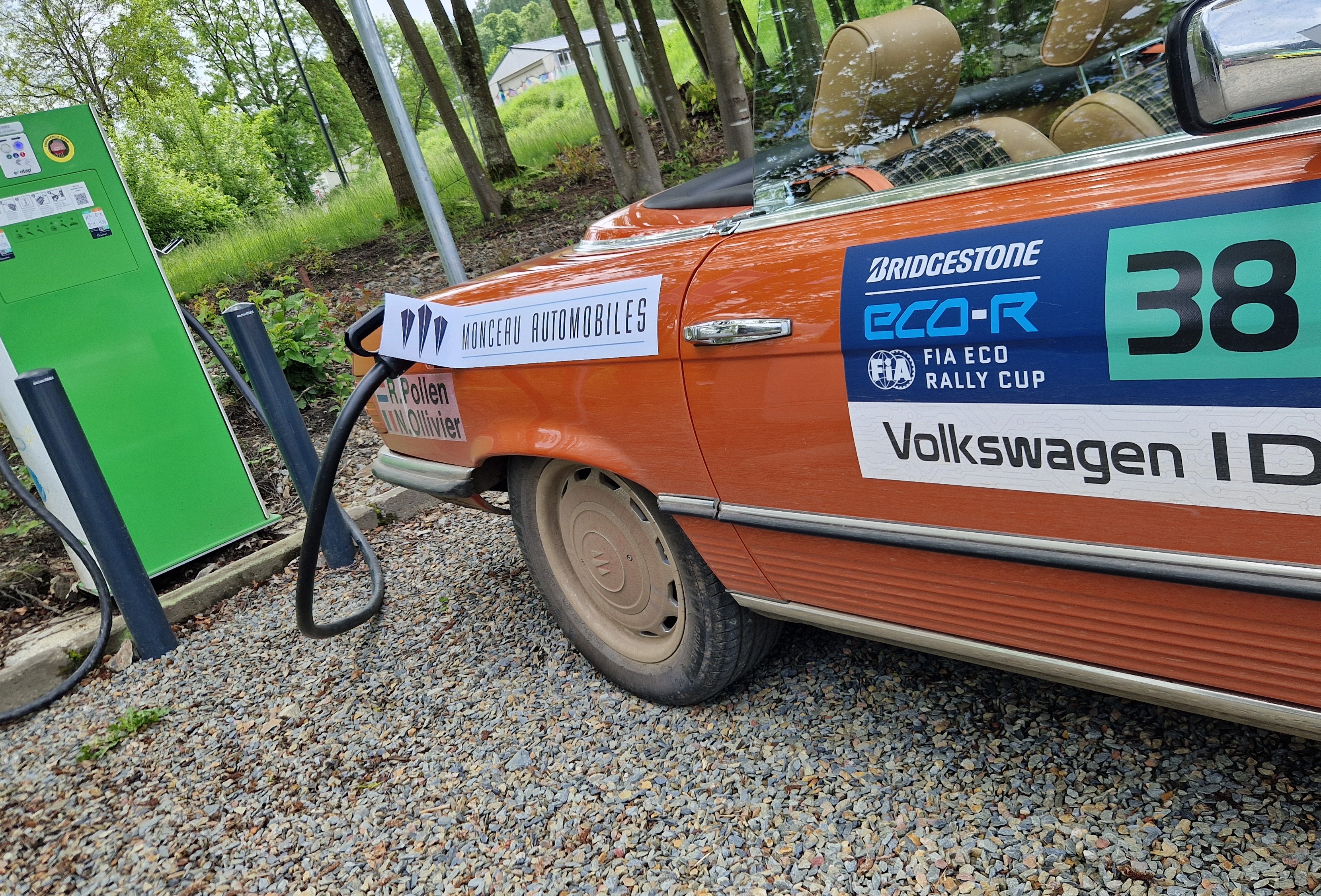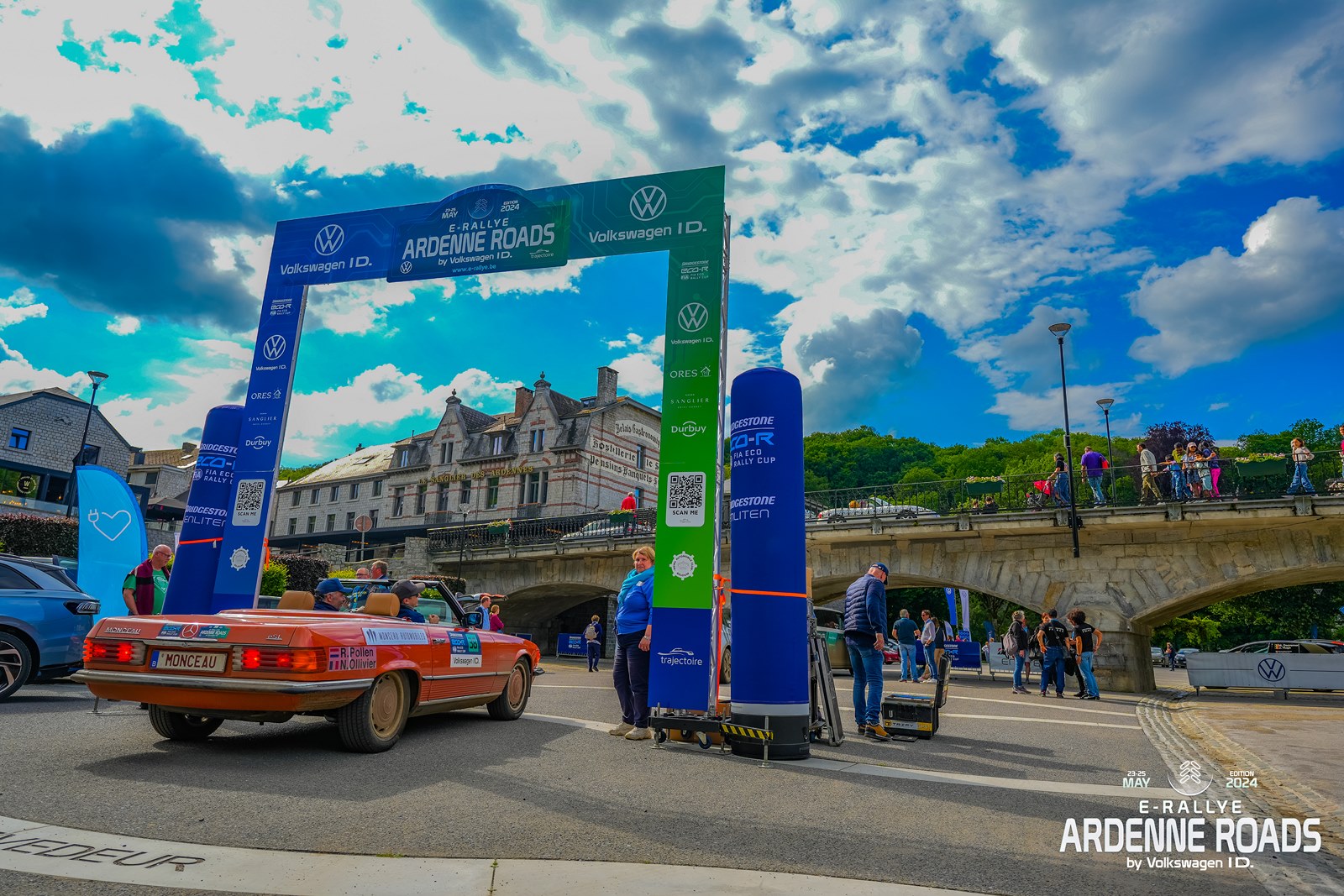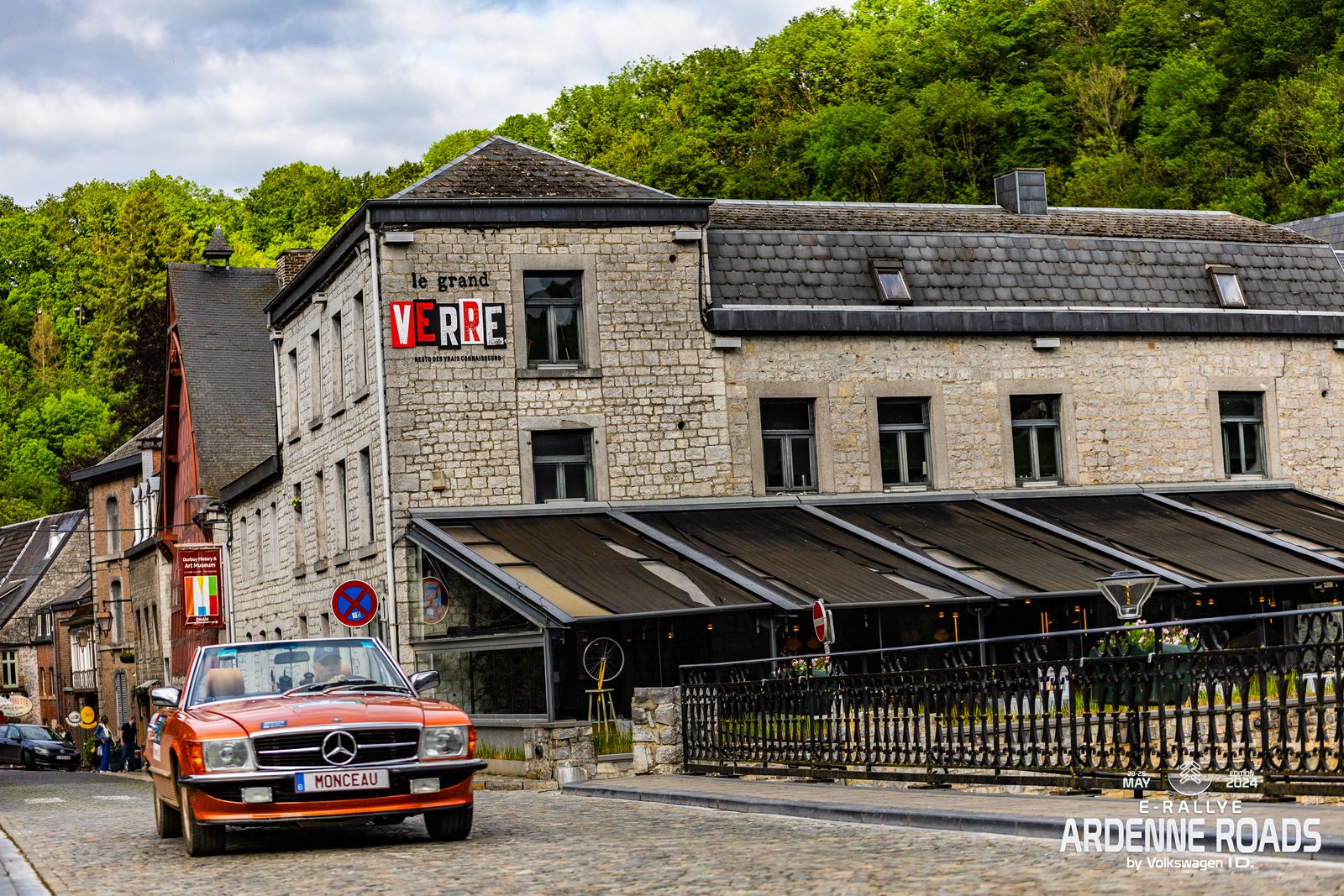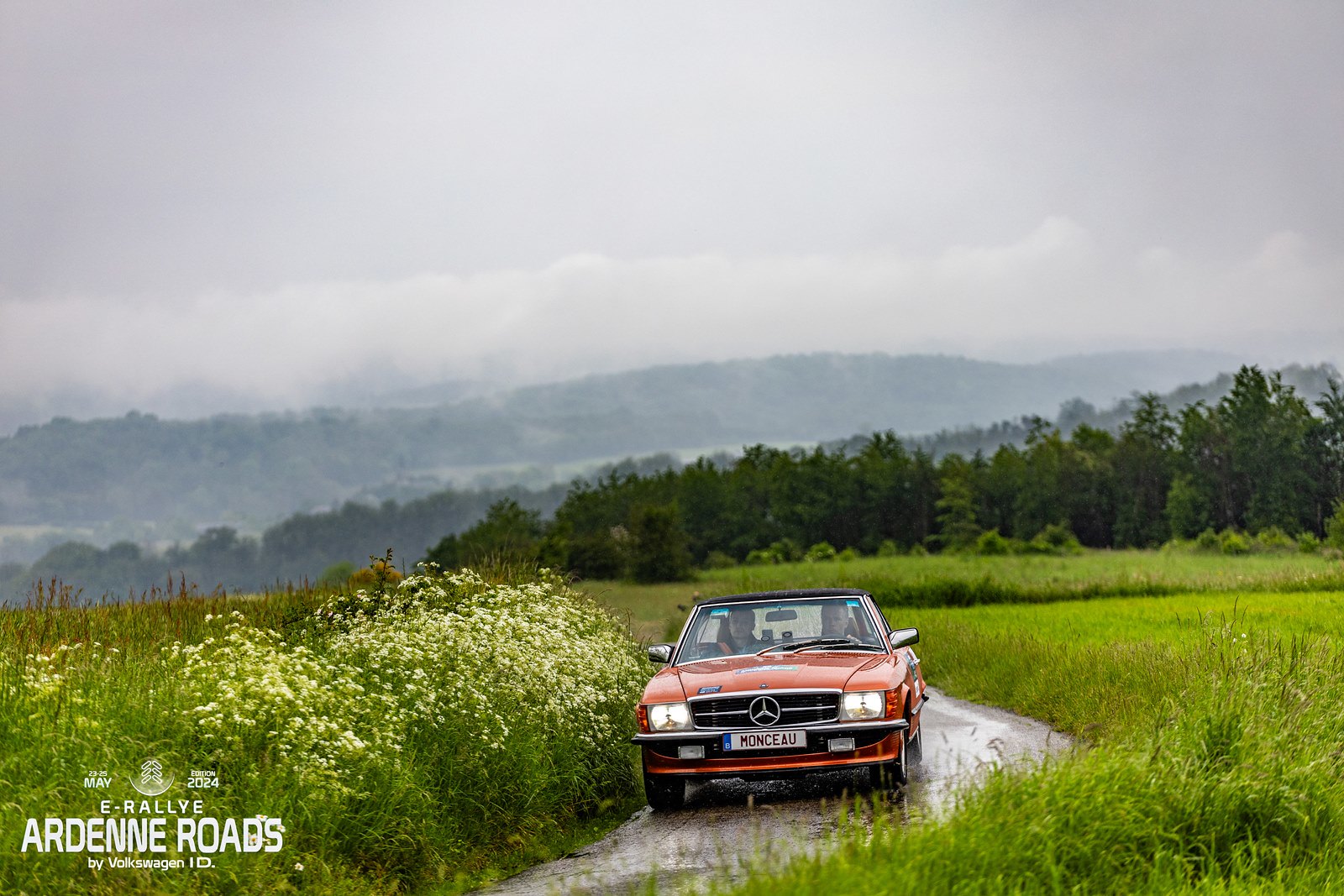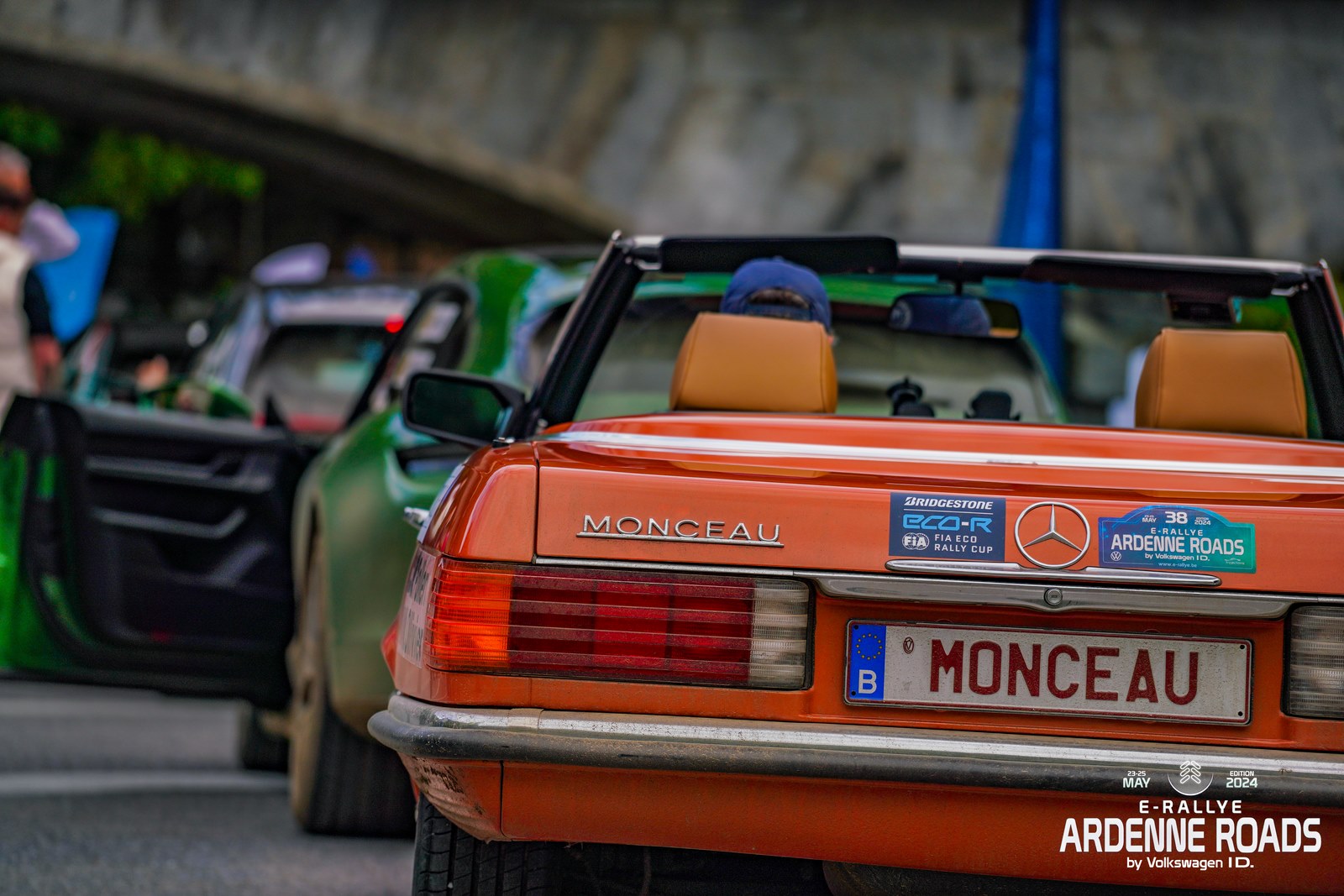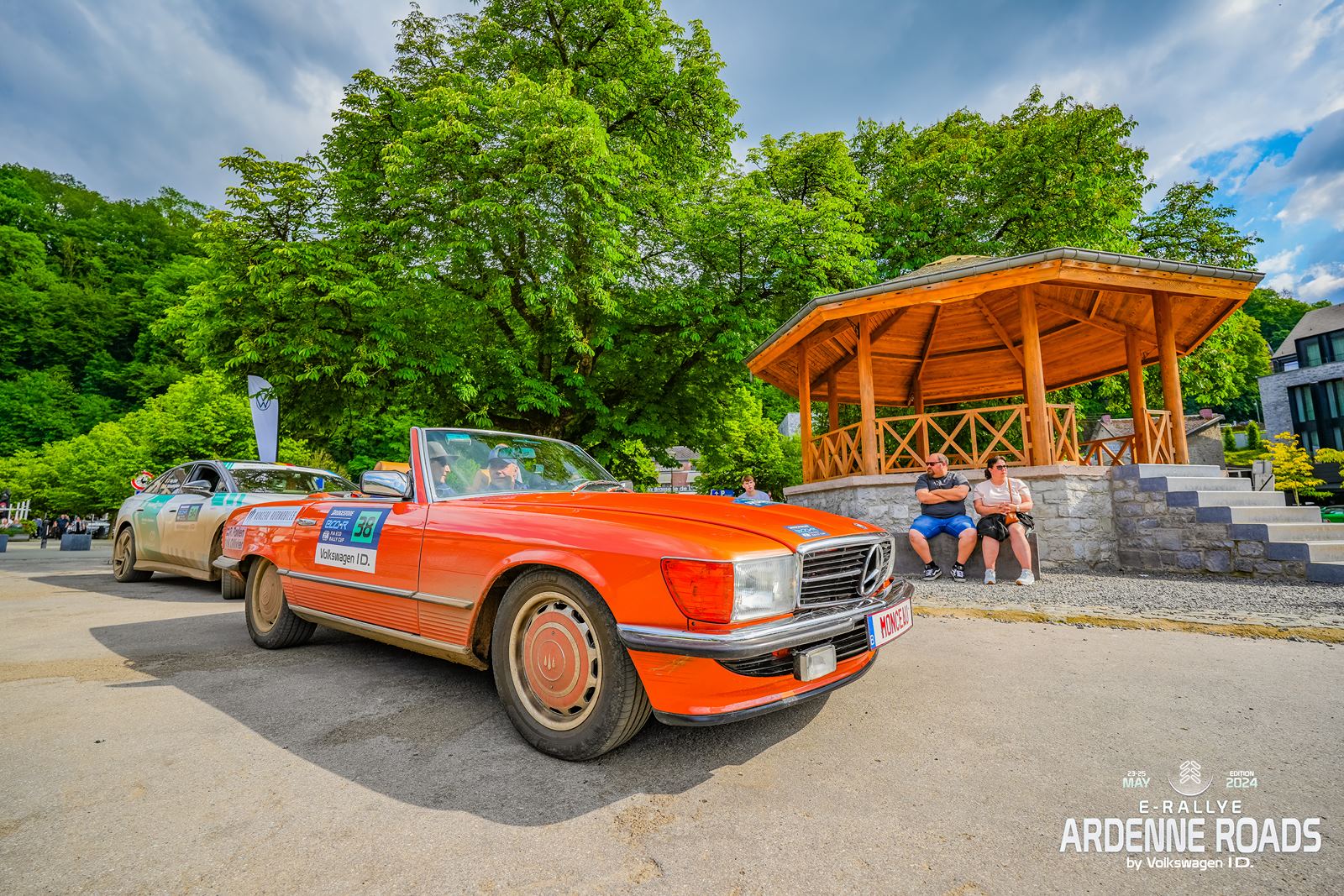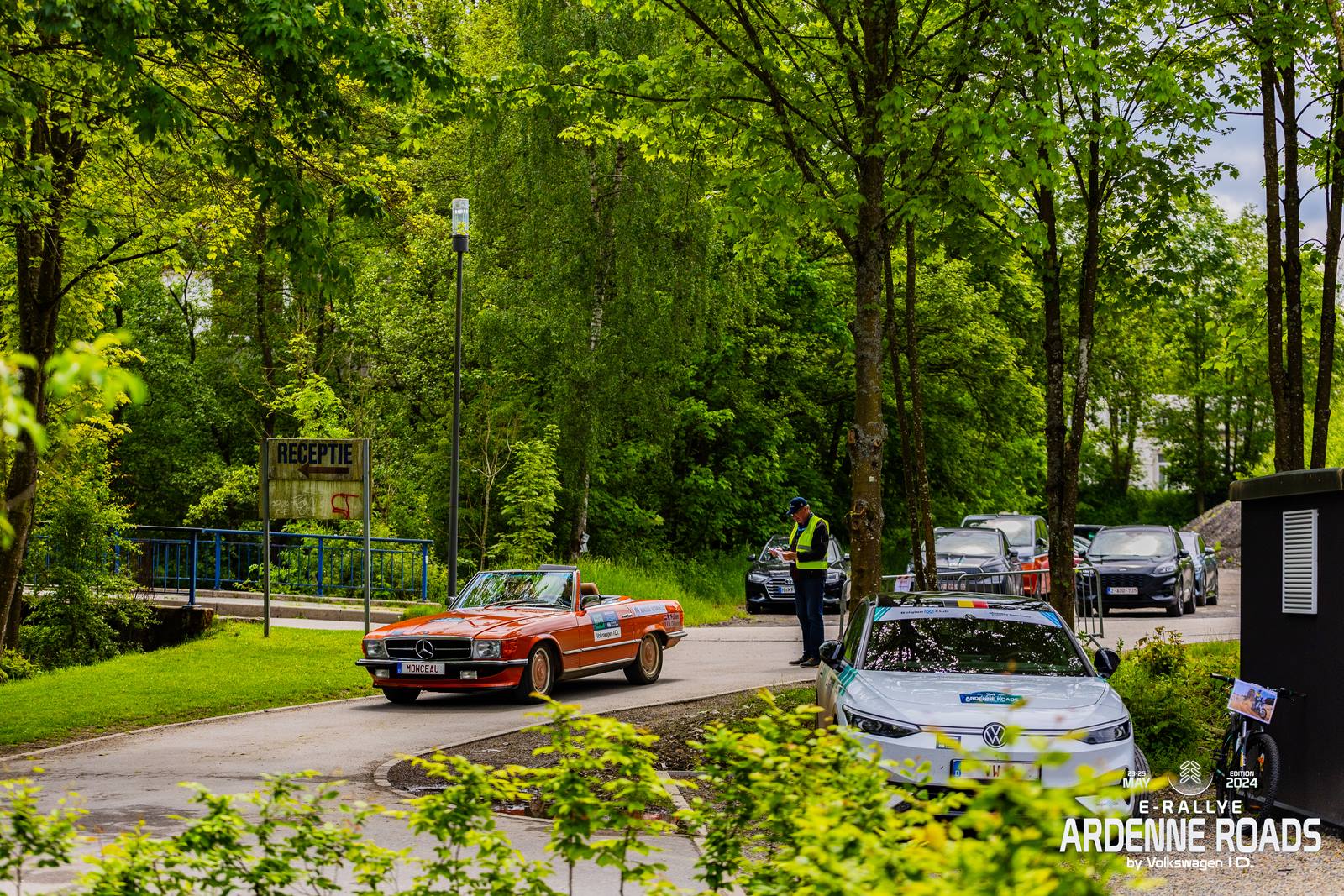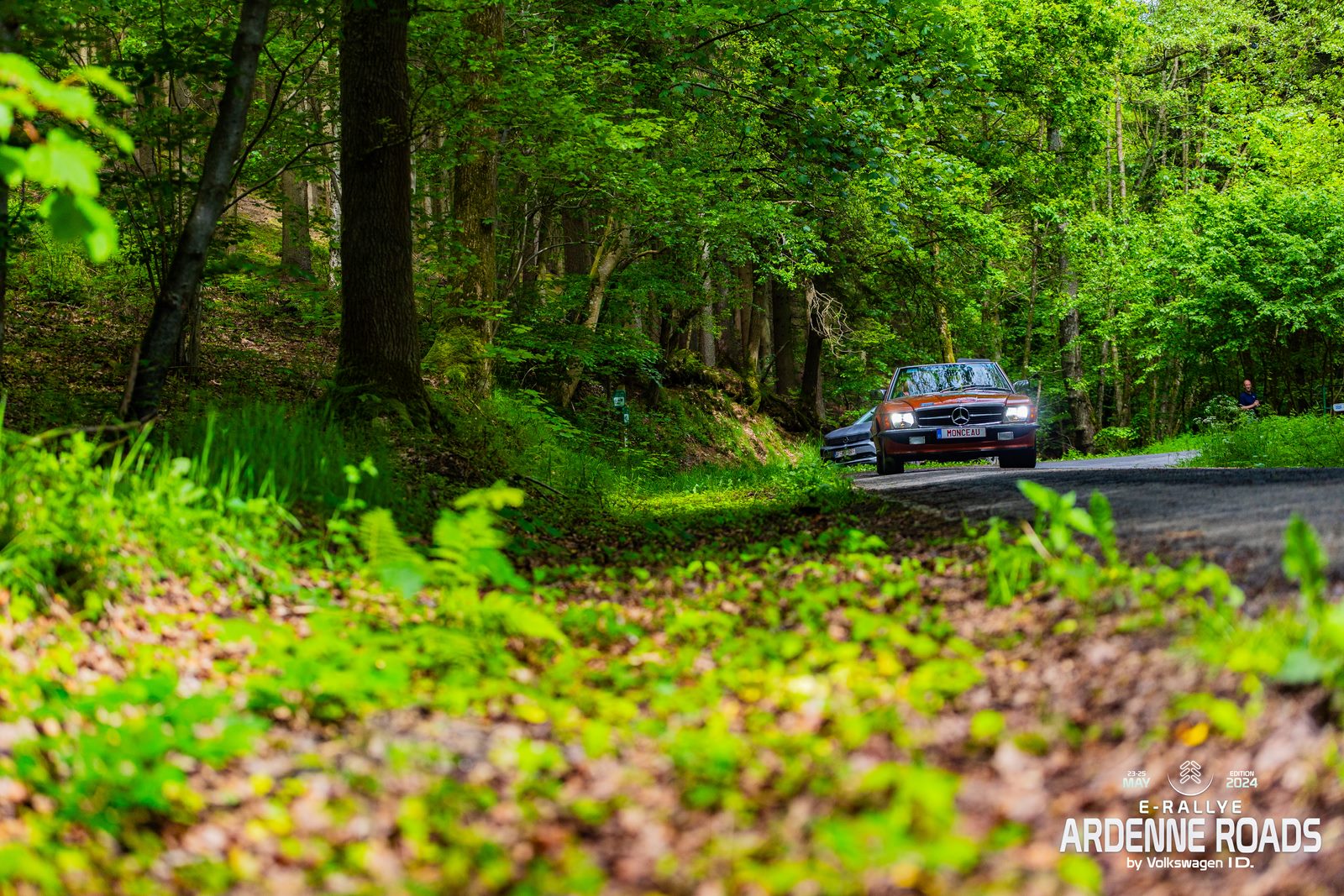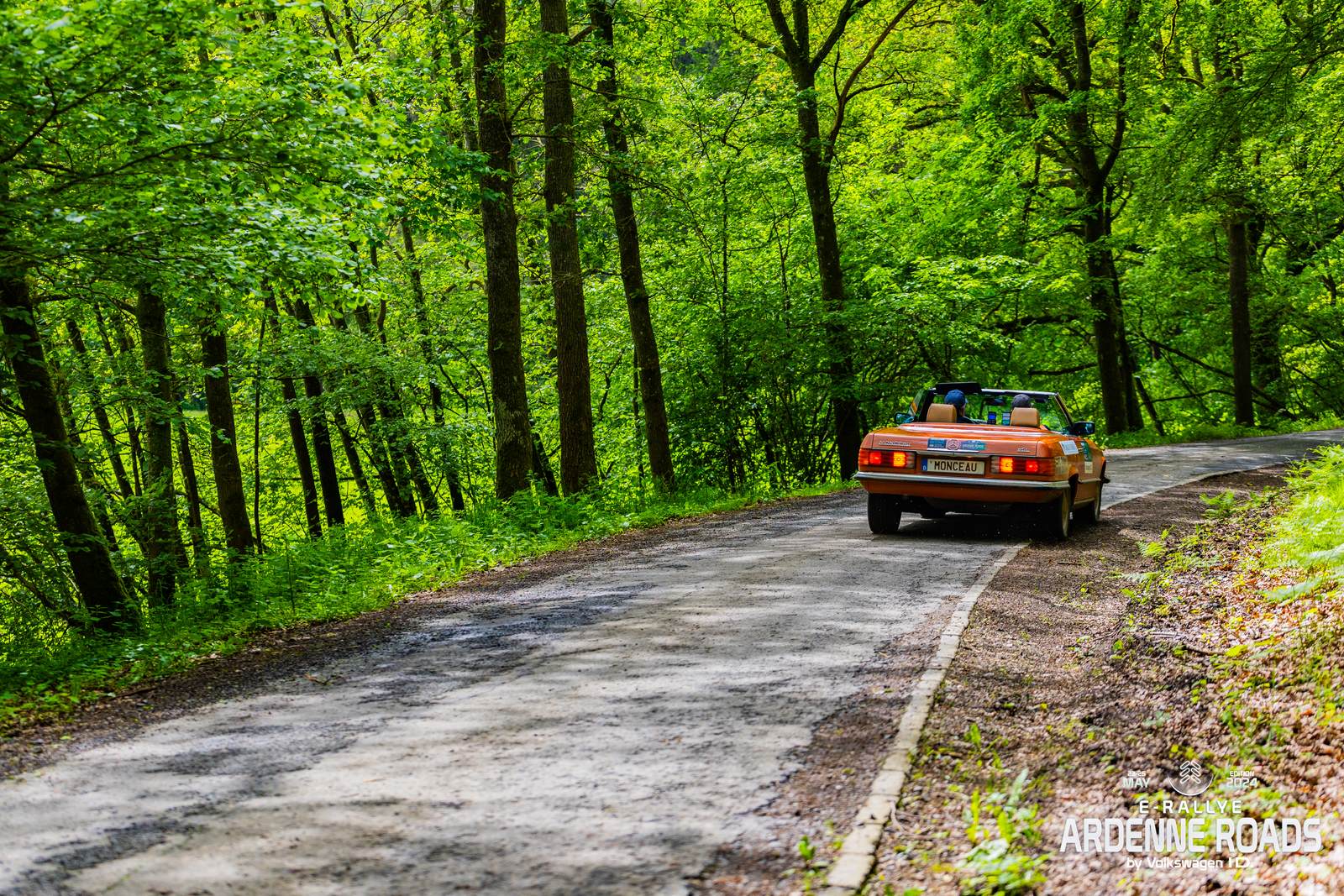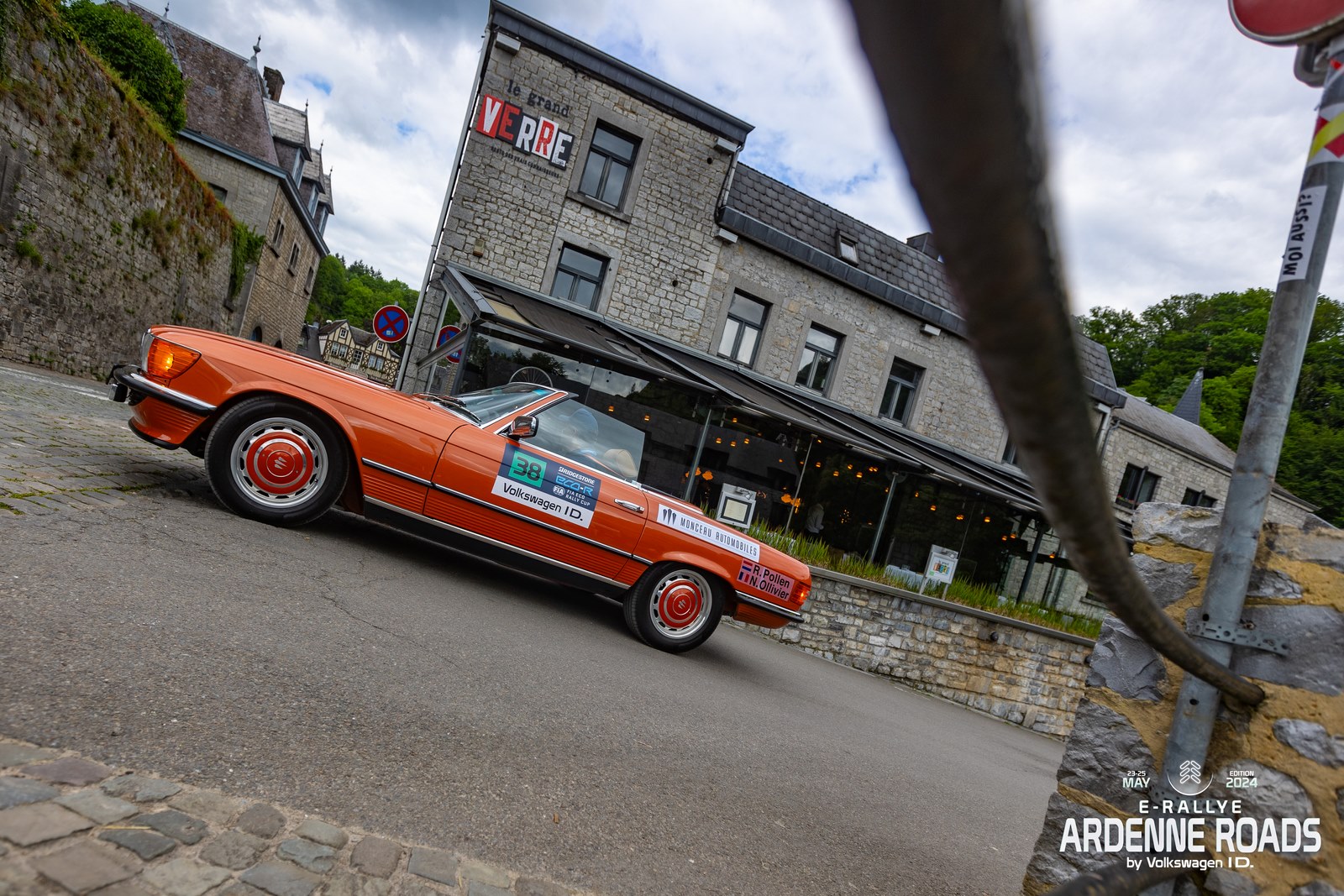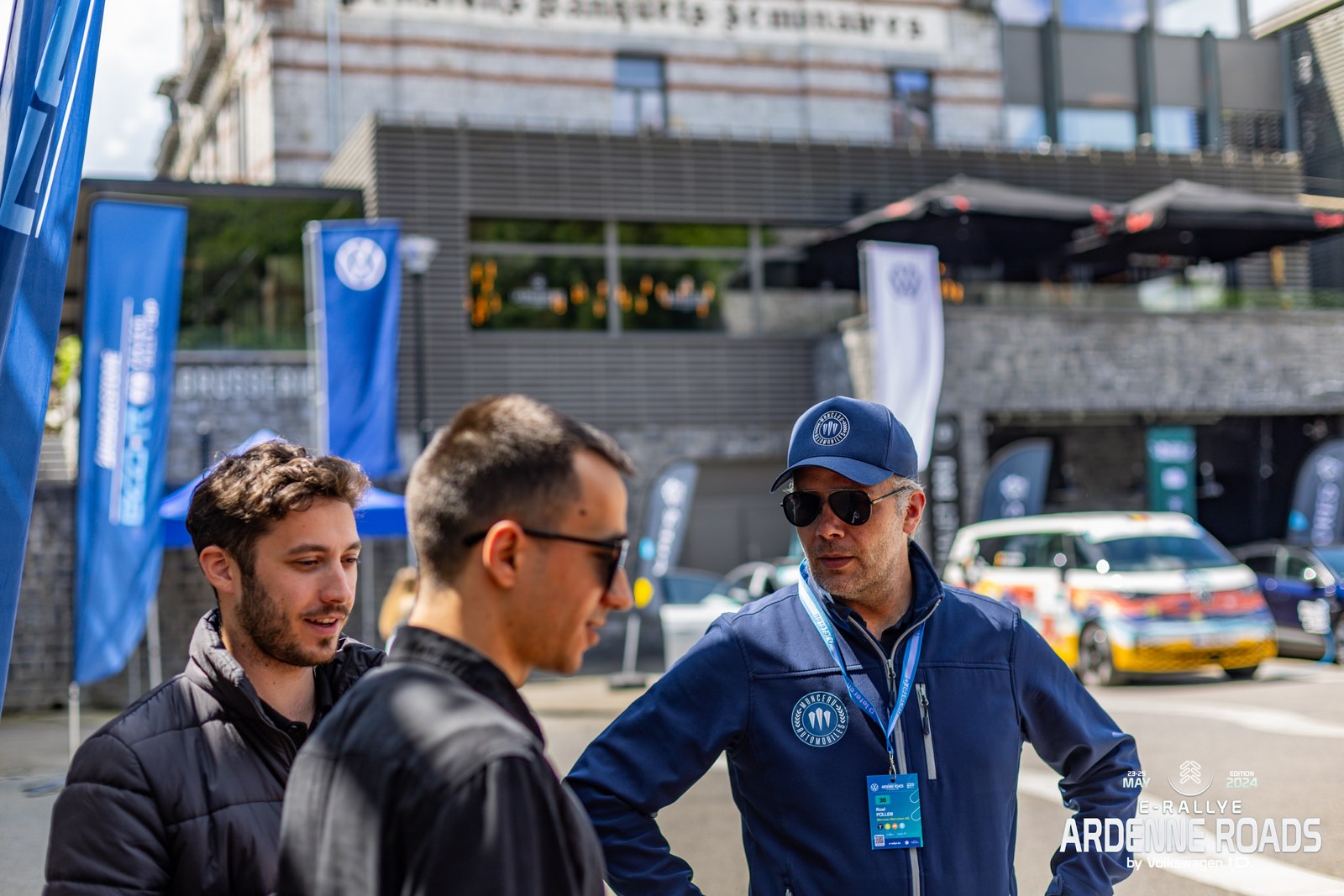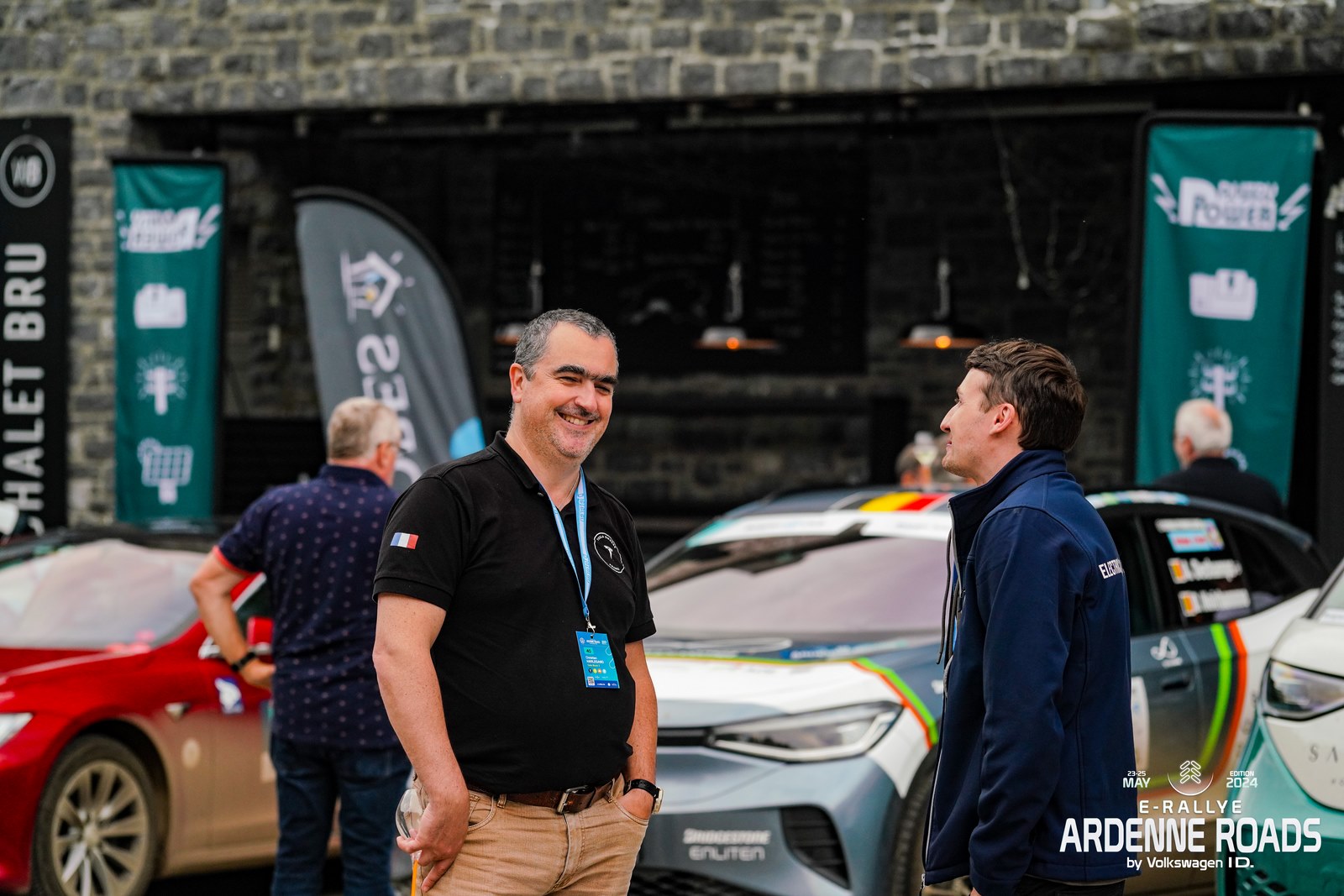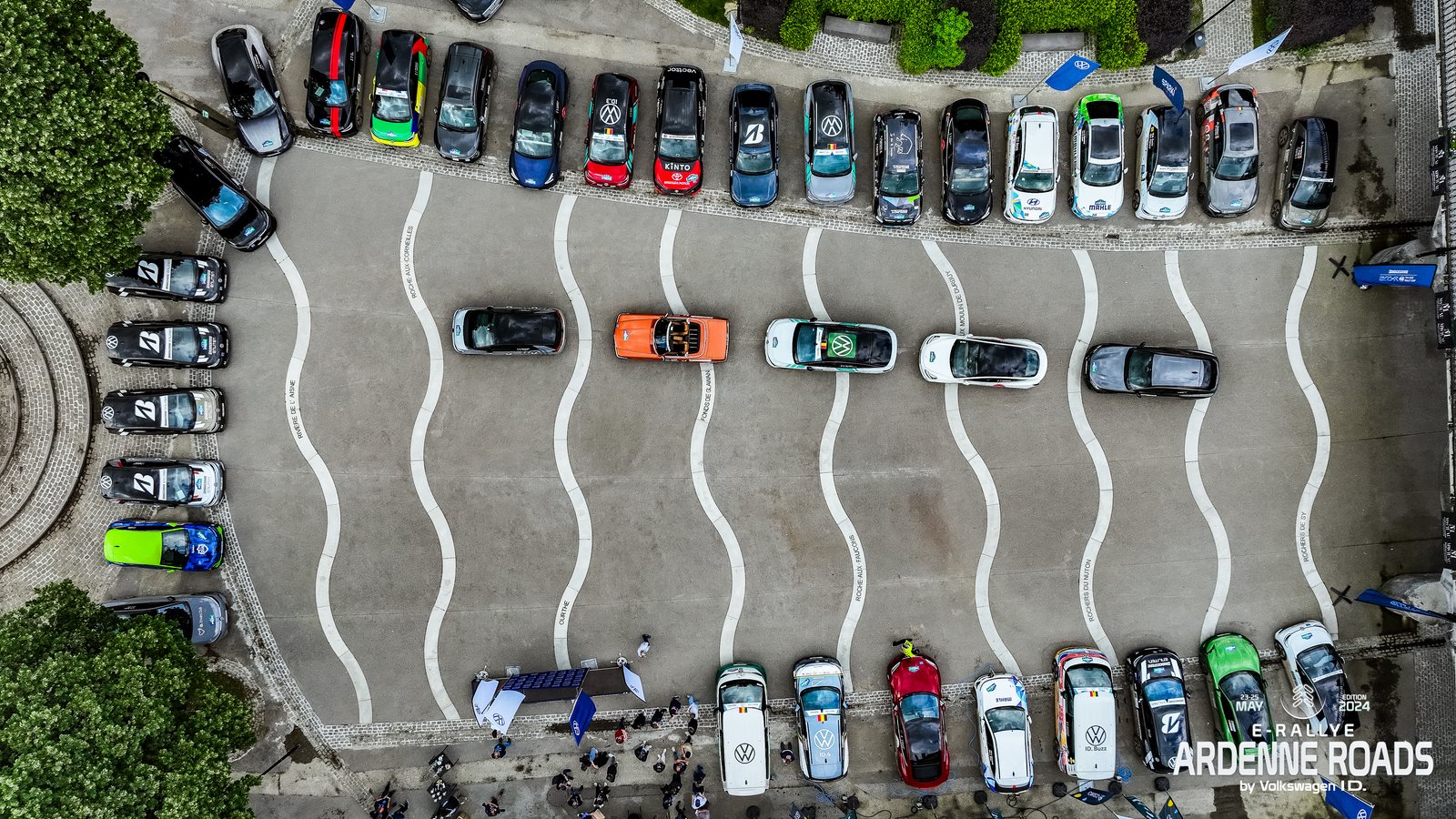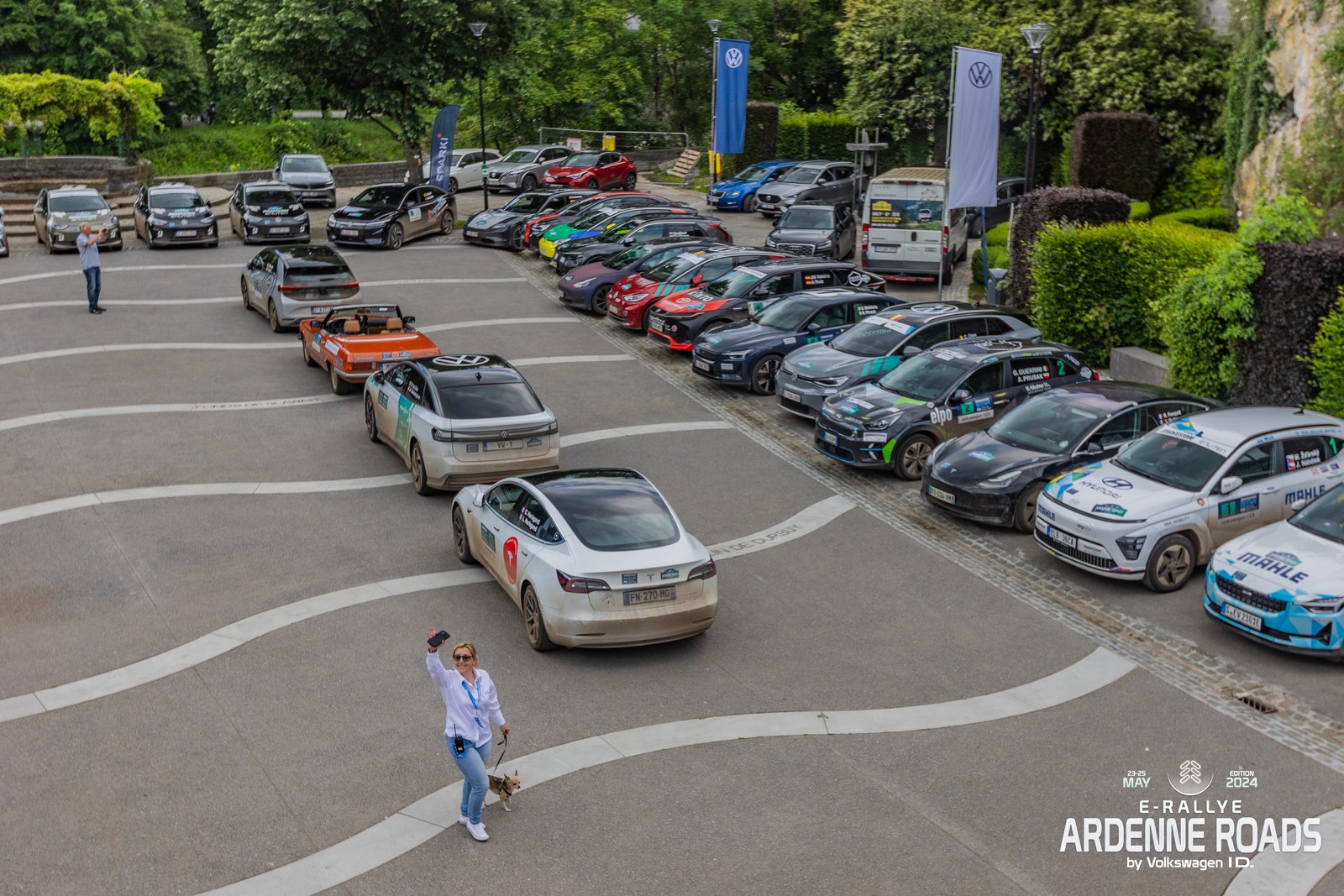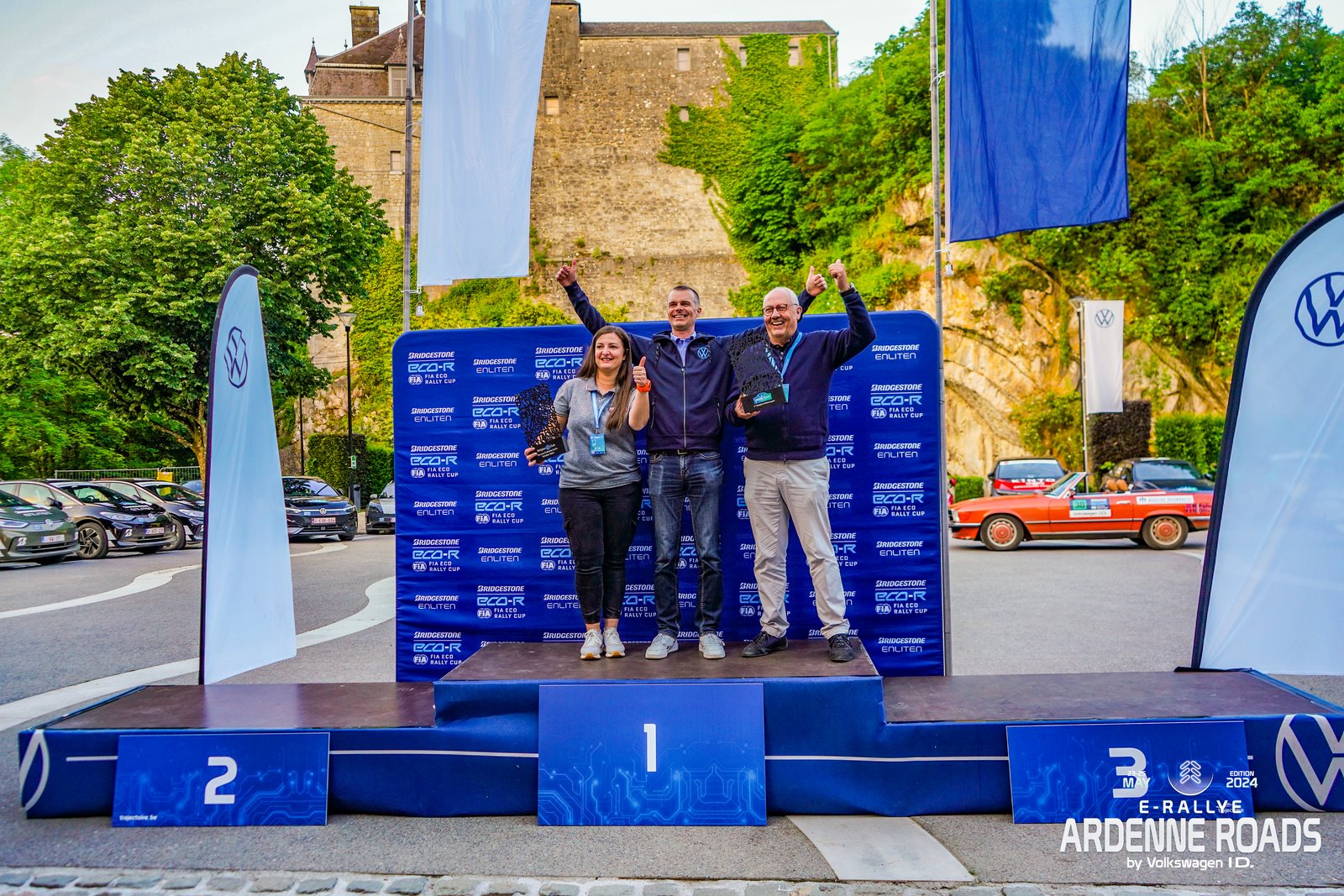Stepping up a notch: FIA E-Rallye
Monceau eSL to enter a professional rallye
Monceau already drove several classic car rallies mostly against petrol classics and youngtimers, most notably the MIB Rallye in Germany. But can our eSL compete against modern EVs in a more 'gruesome' regularity rallye? We found out in the Ardennes at the last weekend of May and participated in the FIA E-Rallye Ardennes Roads Edition 2024. The eSL had to work like a beast with the additional benefit of having tested 8.000 kilometers in just 800 kilometers of rally driving! Here you can read more about rallying in general and about our adventurous journey.
What is the FIA E-Rallye?
The FIA E-Rallye is an electric car rally organized under the auspices of the Fédération Internationale de l’Automobile (FIA). This event focuses on promoting sustainable mobility and the use of electric vehicles in motorsport. Unlike traditional rallies, the E-Rallye emphasizes energy efficiency, precision, and adherence to a strict time schedule rather than pure speed. Participants navigate through various stages with lots of regularity tests, which challenge their driving and navigation skills but also efficiency in energy consumption. The competition is open to production electric cars, highlighting the capabilities and performance of commercially available EVs. By showcasing the potential of electric mobility in a competitive environment, the FIA E-Rallye aims to raise awareness about environmental sustainability and accelerate the adoption of clean energy technologies in the automotive industry.
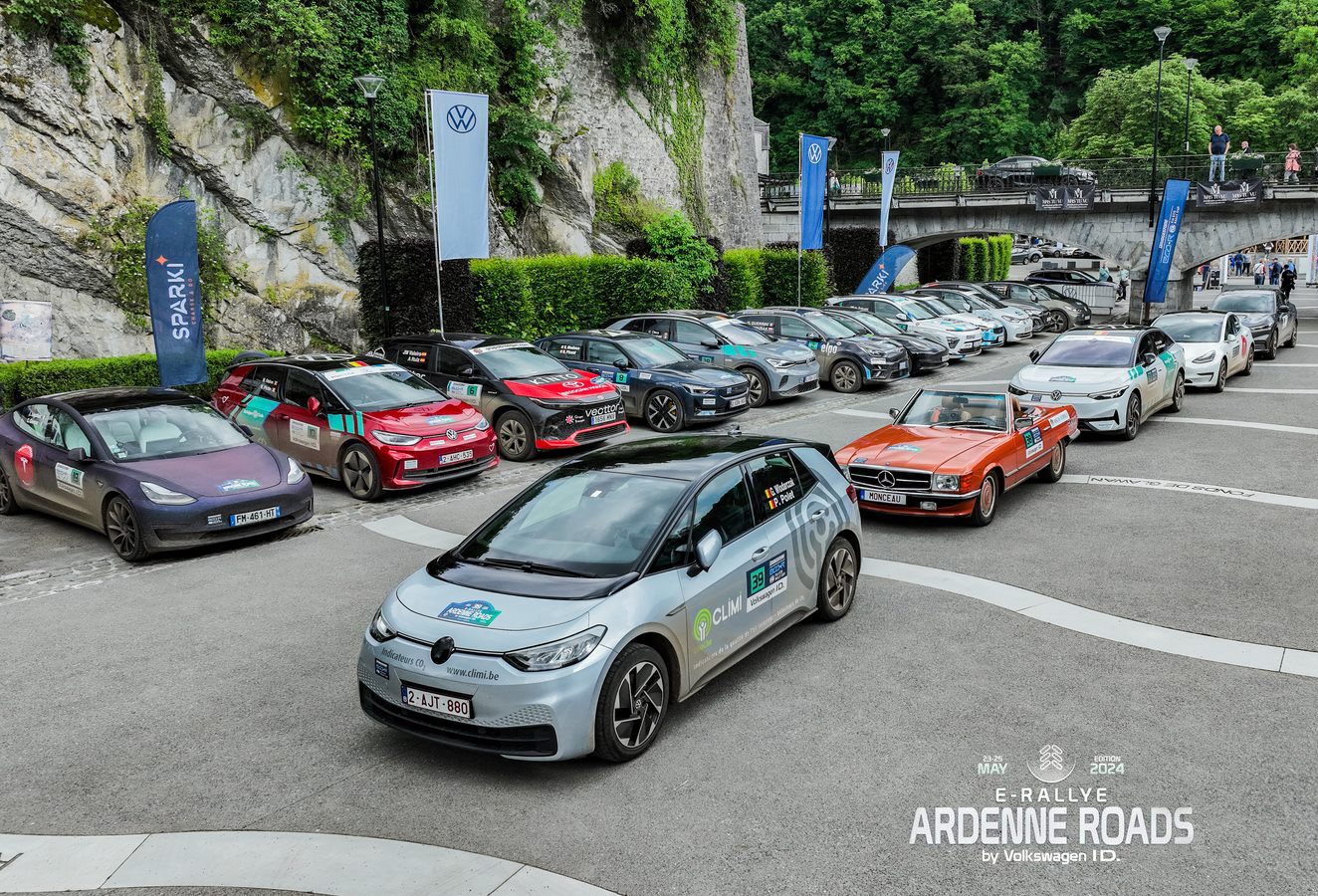
First electric classic car to enter the FIA E-Rallye
As mentioned the FIA E-Rallye is intended for commercially available production EVs and even limited in the regulation to cars that are newer than 2017. However the Belgian organiser of the E-Rallye Ardennes Road Trajectoire was willing to make an exception for Monceau Automobiles and let us enter this interesting rallye. Although our R107 eSL is from 1983, it’s electric drivtrain is forty years younger, good enough to challenge modern EVs. Our ‘rivals’ were ranging from Teslas to Porsche Taycans, but also a lot of Volkswagen ID models ranging from the ID3, ID4, ID7 and ID Buzz. Volkswagen ID is the main sponsor of the event and entered a lot of cars and teams. Besides VW also Bridgestone is title sponsor for this event with their eco-efficient and sustainable tire technology Enliten.
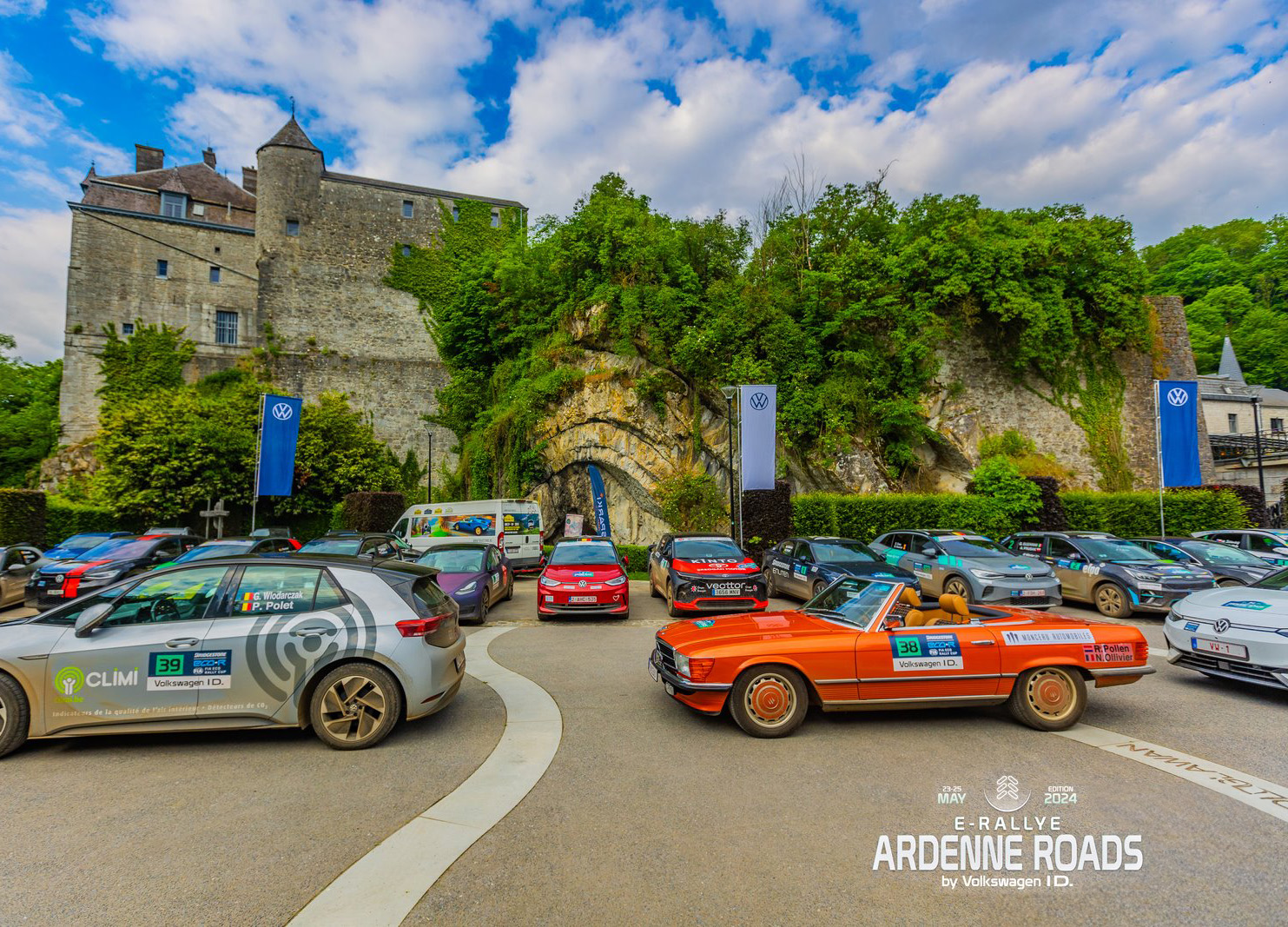
What is a regularity rallye?
A regularity rallye, also known as a time-speed-distance (TSD) rally, is a motorsport driving event where the focus is on accuracy rather than speed. Participants are given a detailed route with specific instructions on where to go and what speed to maintain. The goal is to drive the route and arrive at various checkpoints at precise times.
Here’s how it works:
Route Book Pilot and Co-pilot receive a route book with directions and speed targets one hour before your ideal start time.
Checkpoints: Along the route, there are known hidden checkpoints where the onboard Trippy meter records the exact time each car passes via GPS.
Timing: Drivers aim to reach these checkpoints exactly on time—not early or late.
Penalties: Points are deducted for arriving too early or too late.
The winner is the team that follows the instructions most accurately, maintaining the correct average speeds and arriving at the checkpoints as close to the target times as possible. The best teams are with tenth of seconds at each checkpoint.
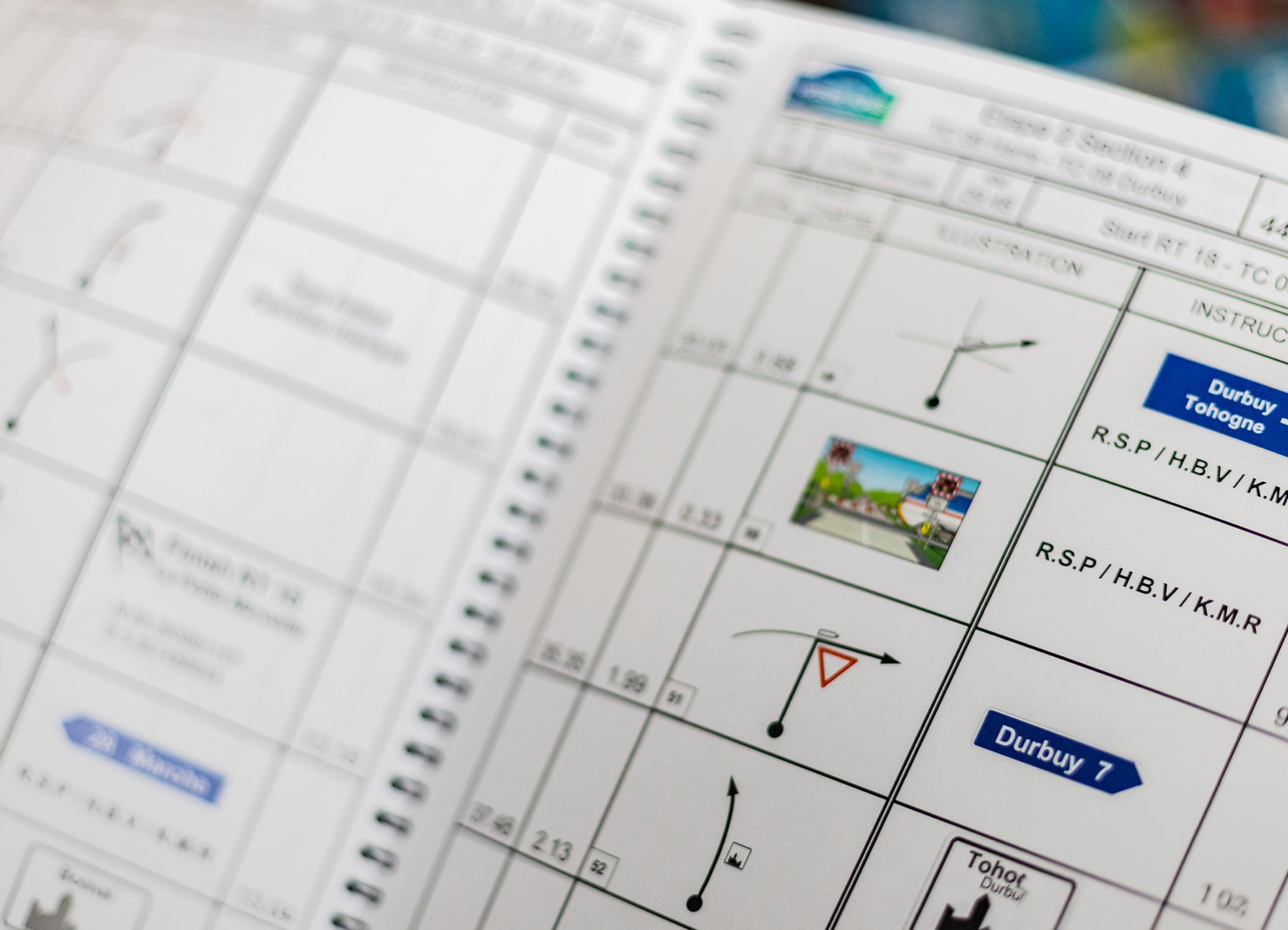
The R/C107 has a history in rallye driving!
Mercedes-Benz made an impact in rallying with their 450 SLC 5.0 and 500 SLC models, particularly in the more gruesome rallies of 1979 and 1980. The 450 SLC 5.0 debuted in the late 1970s, featuring a lightweight aluminum hood and trunk lid, and a 5.0-liter V8 engine. It achieved notable success in the World Rally Championship (WRC), including a win at the 1979 Bandama Côte d’Ivoire Rally and Mercedes-Benz occupying the first four places. The 500 SLC continued this legacy with similar features, further enhancing Mercedes’ rallye credentials with again an impressive one-two at the 1980 Bandama. The R107 500 SL was also build and intended for rally use, emphasizing durability and power. However shortly before the 1981 WRC season Mercedes-Benz withdrew the SL and stopped rallying alltogether, focussing mainly on DTM. These rally models however showcased Mercedes-Benz’s engineering prowess, blending performance and reliability, and left a lasting mark on the rallying world during their era.
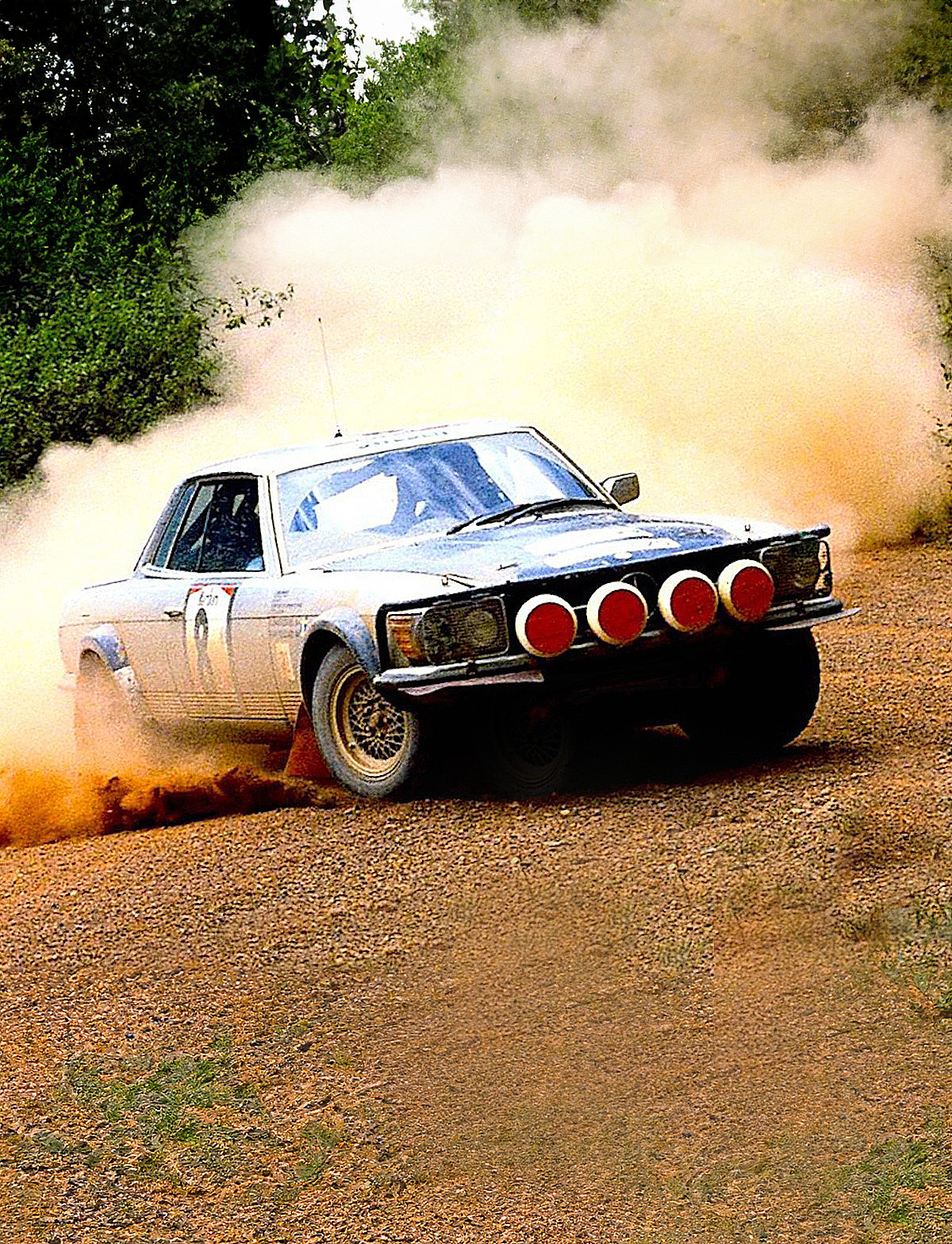
How did Team Monceau perform?
We decided to delegate a team of our own with our Managing Director Roel Pollen as Pilot and Mechanical Designer Nicolas Ollivier as Co-Pilot. From the get go this novice team set a challenge to first of all finish the rallye undamaged and secondly aiming for a classification in the middle part of the ranking. Maybe that’s a very low aim, but it was the first ever regularity rallye to be driven by Monceau, we did not have any professional equipment (navigated via a rally app on the iPhone, which is definitely too inaccurate to ever win) and the competition was very fierce. The frontrunners are seasoned rally drivers and navigation with tons of experience, that can drive within tenth of seconds at every checkpoint; After having driven our first rallye, we have to say that this is a very remarkable job!
The start and finish was in the beautiful small city of Durbuy. On Thursday the 23rd we arrived in the early afternoon, checked in and prepared our car for the rally. This means adding all the mandatory stickers on the car, installing all phone holders and pens, markers and other necessary tooling. Nicolas prepared very well and all the 18 Regularity Trails were already calculated and programmed in our app (we used the Rally Tripmeter App). To test our skills and drive a first RT, we did the Prologue towards the end of the afternoon. Not knowing that we should start at every full minute (0 seconds), we already had a time penalty of 34 seconds just after we started. Luckily we learned this in the prologue and not during the official rallye.
Day one of the rally started in the rain and was very demanding for our team and the car. The team was still learning while competing and also the communication between Dutch driver and French co-driver in English was not always spot-on. The car was put through its paces but had to endure some very bad roads, narrow muddy pathways and tricky corners and hairpin bends. A though day which we ended 29th of the 42 entries, not bad but we had our sight on a higher classification.
The second and last day started much more promising in terms of weather and already at 11 am we could fold down the softtop roof and enjoy some sunshine and the beautiful Ardenne nature. Both the navigating and communication was much better between our pilots on this second day and also the weather helped uplift the spirits. After another intense day, our team improved six positions and ended 23rd in the overall ranking. Not bad for the first ever E-Rally. And more importantly the eSL performed like a champ, mastering every challenge that was thrown at it. Making it the first ever electric classic car to finish an official FIA E-Rally!
And the winners are....
After two intense days of rallying, one team snatched away all the prices! Team number #30 with driver Michel Decremer and co-driver Jennifer Hugo was by far the strongest team and winning not only the overal regularity ranking but also the efficiency ranking. And because the team drove a Volkswagen ID3, they also won an entry ticket in the 2024 e-Rallye Monte-Carlo, an event where the Belgian duo will try to make it two after their victory in the Rallye Monte-Carlo Historique earlier this year.
We should also mention the excellent sixth place of Dutch racing driver Beitske Visser, along with Arthur Kammerer in the Polestar 2. Winning the Energy Consumption ranking and a third place in the combined efficiency ranking.
We enjoyed our participation very much and would like to thank the organisation and team of Trajectoire for the opportunity to join and for the splendid organisation!
All photographs are made by Sky4D commissioned by organiser Trajectoire. All rights reserved.
Afterthought: an electric historic rally car?
After experiencing this rally, we were very much inspired to rethink and design an electric classic rally car based on either the C107 SLC rally car from 1980 or the never-campaigned R107 SL rally car from 1981. Wouldn’t it be a perfect vehicle to enter into future E-Rallies or even historic Rallies? We think it will be an even better ride than the already exhilarating ride in our electric eSL in the past E-Rallye Ardenne Roads!
If you are interested in such a project, please contact us: Our team is ready to take on this challenge and build the reimagined electric Mercedes-Benz R/C107 rally classic beast by Monceau!
